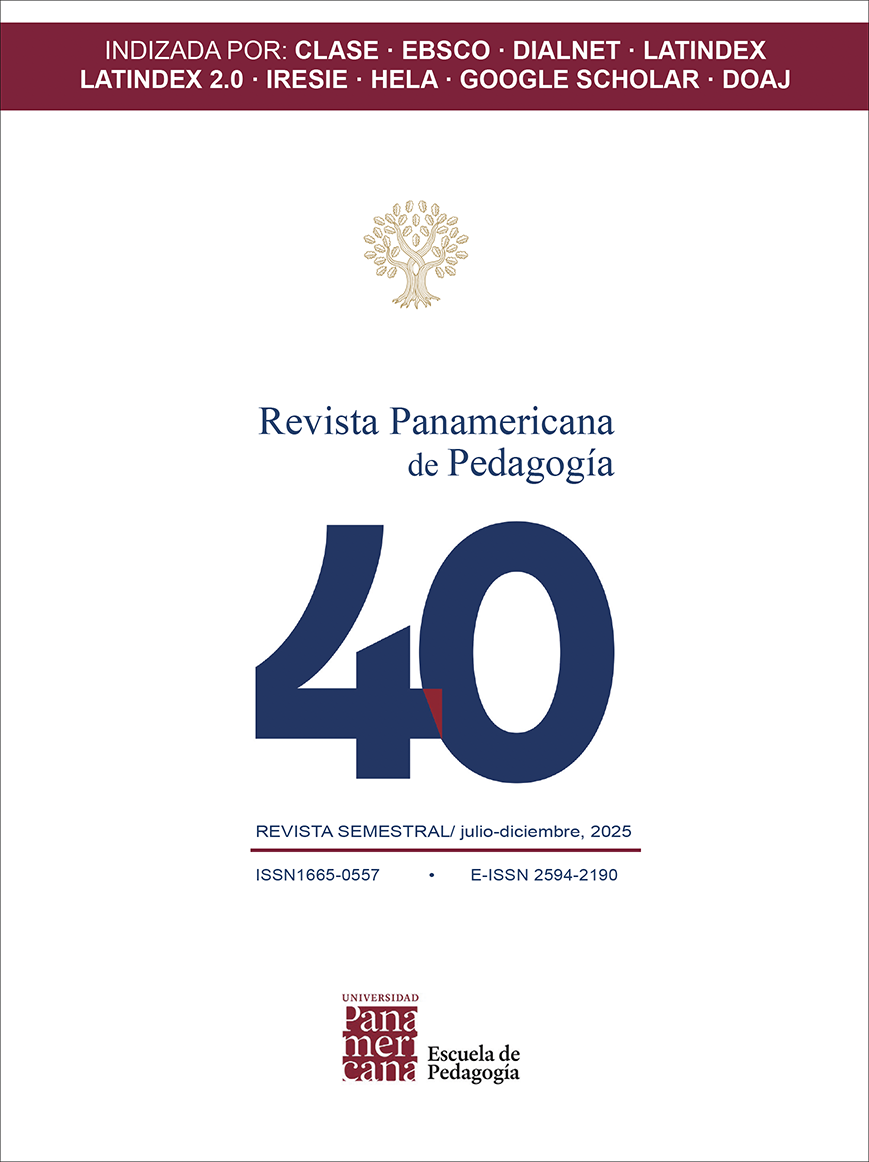Apple technological tools to enhance learning and motivation of Chinese Advanced Placement Biology students
Published 2025-06-27
Keywords
- Advanced Placement (AP),
- College board,
- Biology education,
- Apple technological tools,
- Pedagogical intervention
Copyright (c) 2025 Revista Panamericana de Pedagogía

This work is licensed under a Creative Commons Attribution-NonCommercial-ShareAlike 4.0 International License.
How to Cite
Abstract
The purpose of this research was to analyze the impact of the implementation of Apple’s technological tools on the teaching, learning and motivation process of Chinese Advanced Placement (AP) Biology students. This study was carried out in a private High School in Shenzhen China during the 2021-2022 and 2022-2023 academic years. A quasi-experimental design was used with two different cohorts of 7 students, each enrolled in the AP Biology course. The Control Group (2021-2022 cohort, n=7) was taught using traditional instructional methods. On the other hand, the Intervention Group (2022-2023 cohort, n=7) received instruction with the incorporation of Apple technological tools, redesigned Keynote-based lesson materials, and other pedagogical interventions. Data were obtained through questionnaires, internal mid-term and final exams and the College Board’s standardized AP Biology 2022 and 2023 exams. According to the analysis, the results of the Intervention Group showed a significantly higher final average score on internal assessments and an increase in College Board AP Biology standardized test scores, compared to control group results. Therefore, students in the Intervention group outperformed the control group both in the Global average and the Chinese average in the College Board exam. Students’ comments at the end of the course highlight the ease of use of Apple apps and hardware, and the attractive appearance of Keynote presentations contributing to increased motivation and engagement. These results support the idea that effective implementation of Apple technological tools in AP Biology instruction can significantly improve student motivation and learning, opening the door for future research in this field. This study acknowledges certain limitations, yet it simultaneously demonstrates that educational issues can be addressed from a pragmatic standpoint. The acquisition of knowledge regarding the intricacies of contemporary educational environments is paramount to ensure effective intervention. Teacher preparation is imperative to face the novel educational challenges of this era.
References
- Corey, L. (2019). A case study of iPad implementation in one rural elementary school. Journal of Educational Technology Systems, 48(2), 305–316. https://doi.org/10.1177/0047239519862999
- Creemers, R. (2016). Cyber China: Upgrading propaganda, public opinion work and social management for the twenty-first century. Journal of Contemporary China, 26(103), 85–100. https://doi.org/10.1080/10670564.2016.1206281
- Dempsey, P. (2019). The teardown: Apple iPad Pro. Engineering & Technology, 14, 80–81. https://doi.org/10.1049/et.2019.0227
- Eppard, J., Williams, C., Hojeij, Z., & Johnson, J. D. (2022). iPad integration: How parents and students perceive its effectiveness. International Journal of Education in Mathematics, Science and Technology, 10(2), 372–390. https://doi.org/10.46328/ijemst.2079
- Ferguson, J. M., & Oigara, J. N. (2017). iPads in the classroom: What do teachers think? International Journal of Information and Communication Technology Education, 13(4), 74–86. https://doi.org/10.4018/IJICTE.2017100106
- Funaro, S. (2014). The effects on using ipads in teaching sight words to English Language Learners [Rowan University]. https://rdw.rowan.edu/etd/308
- Klotzbücher, S., Kraushaar, F., Lycas, A., & Suhadolnik, N. V. (2020). Censorship and self-censorship in Chinese contexts. The Journal of the European Association for Chinese Studies, 1, 9–18. https://doi.org/10.25365/jeacs.2020.1.9-18
- Kuo, Y. C., & Kuo, Y. T. (2020). Preservice teachers’ mobile learning experience: An exploratory study of iPad-enhanced collaborative learning. Journal of Digital Learning in Teacher Education, 36(2), 111–123. https://doi.org/10.1080/21532974.2020.1719380
- Osmanović-Zajić, J., & Maksimović, J. (2022). Quasi-experimental research as an epistemological-methodological approach in education research. International Journal of Cognitive Research in Science, Engineering and Education (IJCRSEE), 10(3), 177–183. https://doi.org/10.23947/2334-8496-2022-10-3-177-183
- Shyu, J. (2008). Speak no evil: Circumventing Chinese censorship. San Diego Law Review, 45(1), 211–250. https://digital.sandiego.edu/sdlr/vol45/iss1/7
- Stec, M., Bauer, M., Hopgood, D., & Beery, T. (2018). Adaptation to a curriculum delivered via iPad: The challenge of being early adopters. Technology, Knowledge and Learning, 23(1), 109–127. https://doi.org/10.1007/s10758-017-9301-8
- Tarazi, A., & Arafat, S. (2021). The role of using iPad technology in enhancing students’ motivation toward learning the English Language. Edu Review. Revista Internacional de Educación y Aprendizaje, 9(2), 89–98. https://doi.org/10.37467/gka-revedu.v9.2971
- Zhou, B. (2019). From scale to quality: Experiences and challenges in teacher education in China. ECNU Review of Education, 2(2), 196–204. https://doi.org/10.1177/2096531119853081






